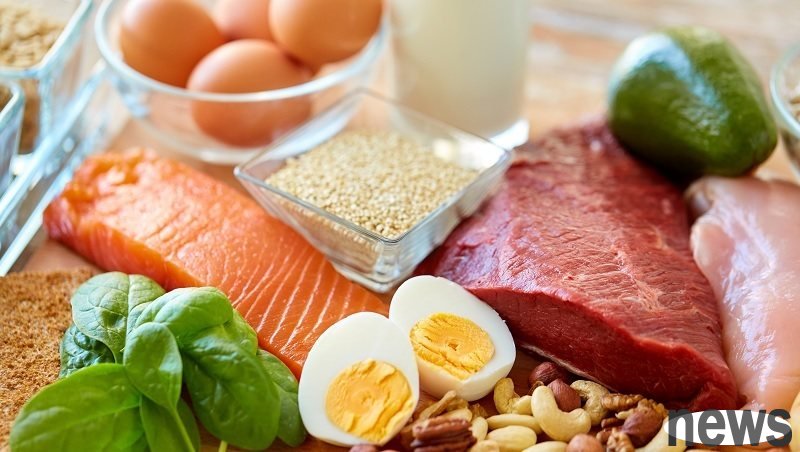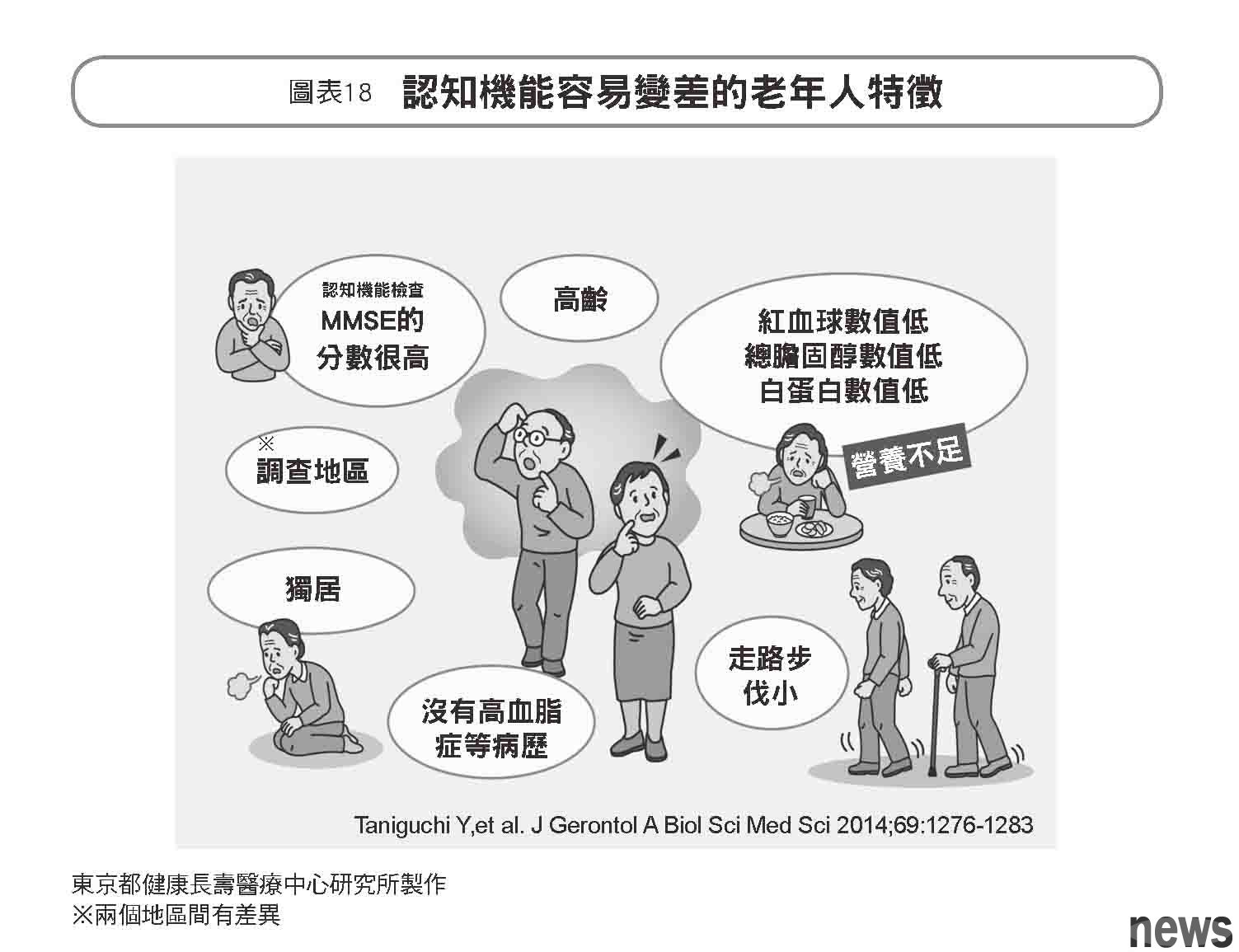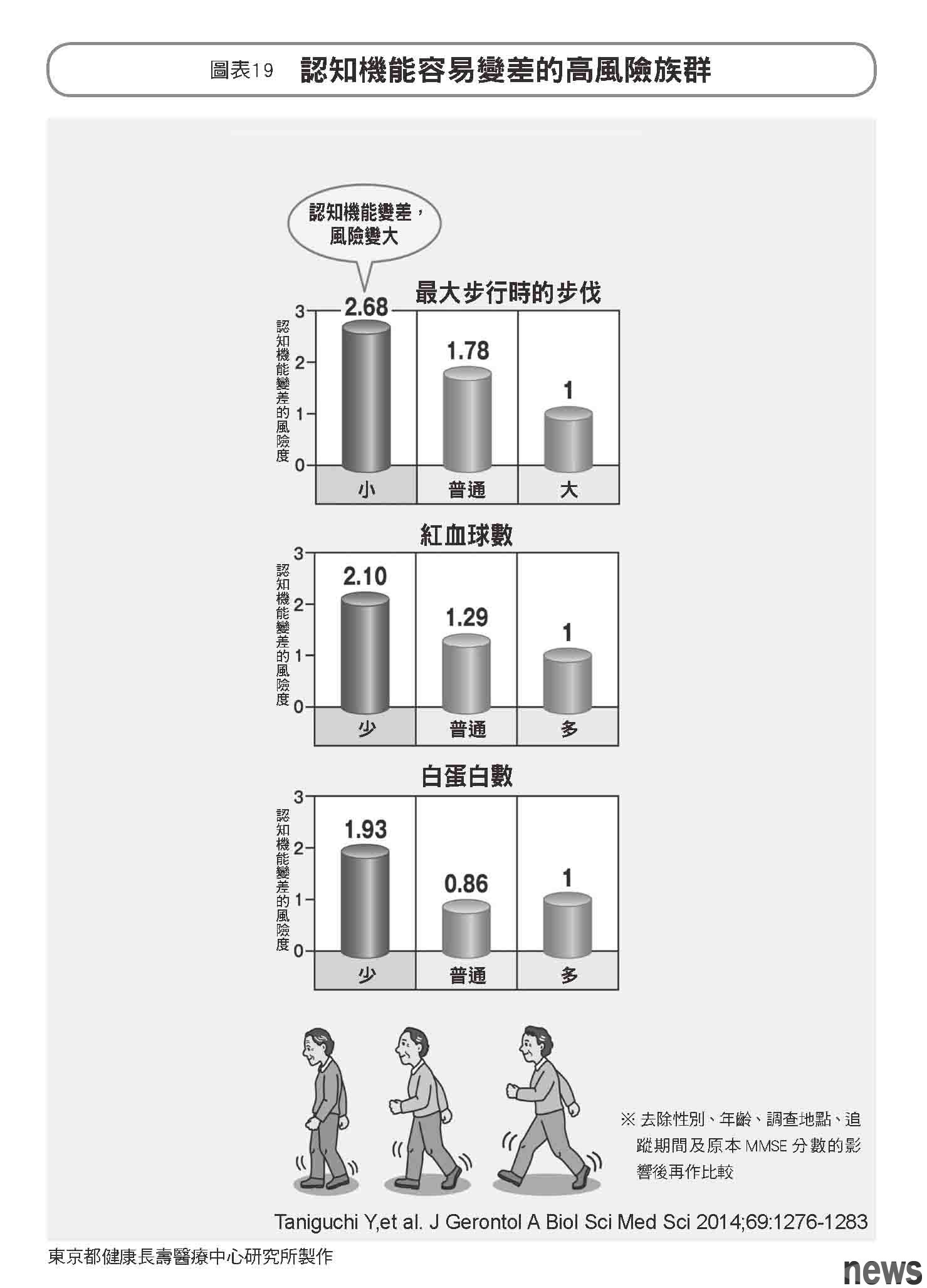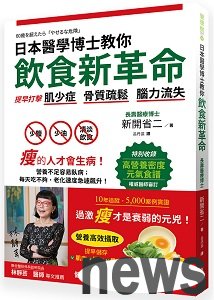Nutrition deficiency causes dementia risks During dementia examination, patients' judgment ability, short-term memory, calculation, hand-made, graphic copying, etc. will be tested. The judgment power is the recognition function of time and place...
 Nutrition deficiency causes dementia risks
Nutrition deficiency causes dementia risks During dementia examination, patients' judgment ability, short-term memory, calculation, hand-made, graphic copying, etc. will be tested. The judgment power is the recognition function of time and place, such as "what year is this year?" and "what county is here".
Short-term memory asks the other party to remember the names of items such as "天", "cat", and "mobile", and after a while, he will ask him to retell it again to see if he remembers it.
Such a state of low recognition function and disorders in daily life is dementia.
From the perspective of nutritional indicators, people with too few red blood cells and low total sterol and albumin are prone to dementia. In addition, people who walk small and rarely go out are also high-risk groups of dementia (Figures 18 and 19).


In other words, people with insufficient nutrition have a higher chance of getting dementia. Insufficient nutrition will reduce brain function, and it is also a big problem that the body function will not leave the user after the foot. Staying at home all the time and not receiving external stimulation will increase the chance of dementia. If you experience dementia and your concern for your diet decreases, you will fall into a more ill-nutritional circulatory state.
Generally speaking, if the nutrients are too poor, it will accelerate brain sclerosis and prone to dementia. However, from the Japanese's actual survey, it can be seen that people with insufficient nutrition are more likely to suffer from dementia than those with excess nutrition.
The lesion hardening caused by excessive nutrition is caused by obstructing blood vessels, while lesion hardening caused by insufficient nutrition is caused by weak lesion hardening of blood vessel walls.
Sclerotic brain infarction is a common brain infarction disease in European and Americans. Cialis is accumulated in the blood vessels and becomes the substance that hardens the porridge and blocks the blood vessels. When the blood vessels (cortical branches) that cover the surface of the brain narrow, it will affect blood circulation and cause brain infarction.
Compared with sclerotic aplasia infarction, small holes in the infarction. It is the finer blood vessels (penetration overdraft) in the brain that are blocked. After the blood vessel wall is fragile and damaged, a small tumor develops at this location, causing blood vessel blockage and causing brain infarction. Small hole infarction is a common brain infarction in Japanese (especially in high aged).
In 2003, I studied two hundred brain-related patients who were diagnosed at the research center. Although it is difficult to get serious about the causes of classification, I found that small vitreous infarction caused by fragility of blood vessels accounts for about half of the people with brain infarction. Brain hemorrhage refers to the rupture and bleeding of small blood vessels in the brain. The fragile blood vessel walls can also easily cause brain bleeding.
Peak infarction and brain hemorrhage are caused by fragile blood vessel walls and are closely related to poor nutrition. General health education only emphasizes the regulation of cervical sterol blocking blood vessels, and few people will notice that nutritional deficiency can also make the blood vessel walls fragile. Although middle-aged people should pay attention to the problem of citric sterol blocking blood vessels, the elderly should pay more attention to the fact that insufficient nutrients can make the blood vessel walls fragile.
Want to make protein more effective? Research on the combination of vitamins and mineralsshows that trace nutrients may also improve synthetic impedance. The so-called trace nutrients refer to vitamins and minerals. Researchers’ view is that when protein is taken, if trace nutrients are taken at the same time, amino acids can attach more efficiently to the muscles.
To confirm this, we conducted a research with the manufacturer. Our assumption is that when we take in trace nutrients and proteins at the same time, our muscle mass will be higher, so we have tried it together with vitamins and minerals.
We ask residents of the 65-80-year-old Tokyo Banqiao District who are not usually active in conducting this study. We let these people go to the sports classroom to attend classes and wait twelve weeks before seeing the results.
This study is divided into two groups: "Education + Nutrition" and "Education Only". In terms of nutrition supplementation, the experimenter should drink protein-rich milk sold by the manufacturer and trace nutrients. You need to drink 200 ml of milk at a time, which contains about 10 grams of protein. The trace nutrient is 125 milliliters and contains vitamins D, E, B12, leaf acid and lactic acid. The subjects of the experiment drank trace amounts of nutrients every morning and high-protein milk at noon.
In addition, they will also ask them to come to the institute twice a week, each time for an hour of exercise. The content includes soft exercises, upper limb exercises with a towel and two hands, fitness training in a lying state, etc. In addition, they also use a pedometer to ask them to walk more.
In the first three days of the start of the exercise, we conducted a diet survey on them to confirm everyone's nutritional status. In the intake of nutrients, there is no significant difference between the two sets except for drinks.
After three months, whether it is a "movement + nutrition" group or a "movement only" group, it has increased in muscle performance. The maximum walking speed increased, reducing the speed of standing up from the chair by thirty seconds, increasing the number of times it stood up from the chair to five times. Compared with the
, the "Sports + Nutrition" group results are slightly better, but there is no significant difference. In other words, in terms of muscle performance, "movement + nutrition" and "movement only" are similar, and both are rising.
But in terms of muscle mass, there is a clear difference between the two groups. In terms of fat-free soft tissue quality (muscle mass), the "movement + nutrition" group has increased, but the "movement only" group has decreased. Especially the quality of fat-free soft tissues throughout the body is greatly reduced. In other words, when it comes to sport, the muscles in the whole body are likely to decrease (Figure 23).
This study examines the relationship between the increase in muscle mass and various components in the blood. We found that if the concentration of vitamin B12, leaf acid and vitamin D in the blood is higher, the more muscle mass increases.
In the study of synthetic impedance, if the elderly take ten grams of protein, they still don’t increase muscle mass, but in our study, even if only ten grams of protein is taken, the elderly still increase muscle mass. This result is considered to be due to the simultaneous intake of trace nutrients.
According to the research results, to prevent sarcopenia and swelling or geriatric dysfunction, protein should be taken while exercising. In addition, it is necessary to extract trace nutrients that can allow protein to function well in the body. These are all very important. There is no need to take any special measures. As long as you eat dishes rich in a variety of ingredients every day, you can get protein and trace nutrients.
In parts that cannot be supplemented with diet, you can also choose healthy food or nutritional supplements. Now food manufacturers are targeting commercial breasts and developing various healthy products. In addition, there are soups or breast dryers that strengthen protein. We recommend finding suitable products to use them yourself.
Book Introduction

Book Name: Japanese Doctor Teach You the New Revolution of Diet: Early Disease of Sarcopenia, Bone Relief, Brain Loss Author: Xinkaiji
Publisher: Excellent Culture
Publication Date: 2020/06/11
Author Introduction/Xinkaiji
Deputy Director of the Institute of Tokyo Health and Health Medical Center. PhD in medicine and doctor.
1984 PhD courses at the Institute of Medicine of Aiyuan University. He was an assistant professor of the Department of Medicine at Aiyuan University (public health) and has been a member of the Tokyo Institute of Comprehensive Elderly (now the Institute of Health and Health Center of Tokyo) since 1998, and has served as a current position since 2015. From 1990 to 1991, he studied in the Medical Department of Toronto, Canada as an overseas researcher. He has served as a director, appraiser of the Japanese Senior Clinic, Japanese Senior Social Sciences, Japanese Applied Geriatrics, Japanese Professional Efficacy Medicine, and other director of the Ministry of Health and Health "Health Japan 21 (Second) Planning Special Committee" and researcher of JST-RISTEX Research and Development. He has won awards from the Japanese Public Health Association (2006), the governor’s award (2007 Research, Invention and Development Department).